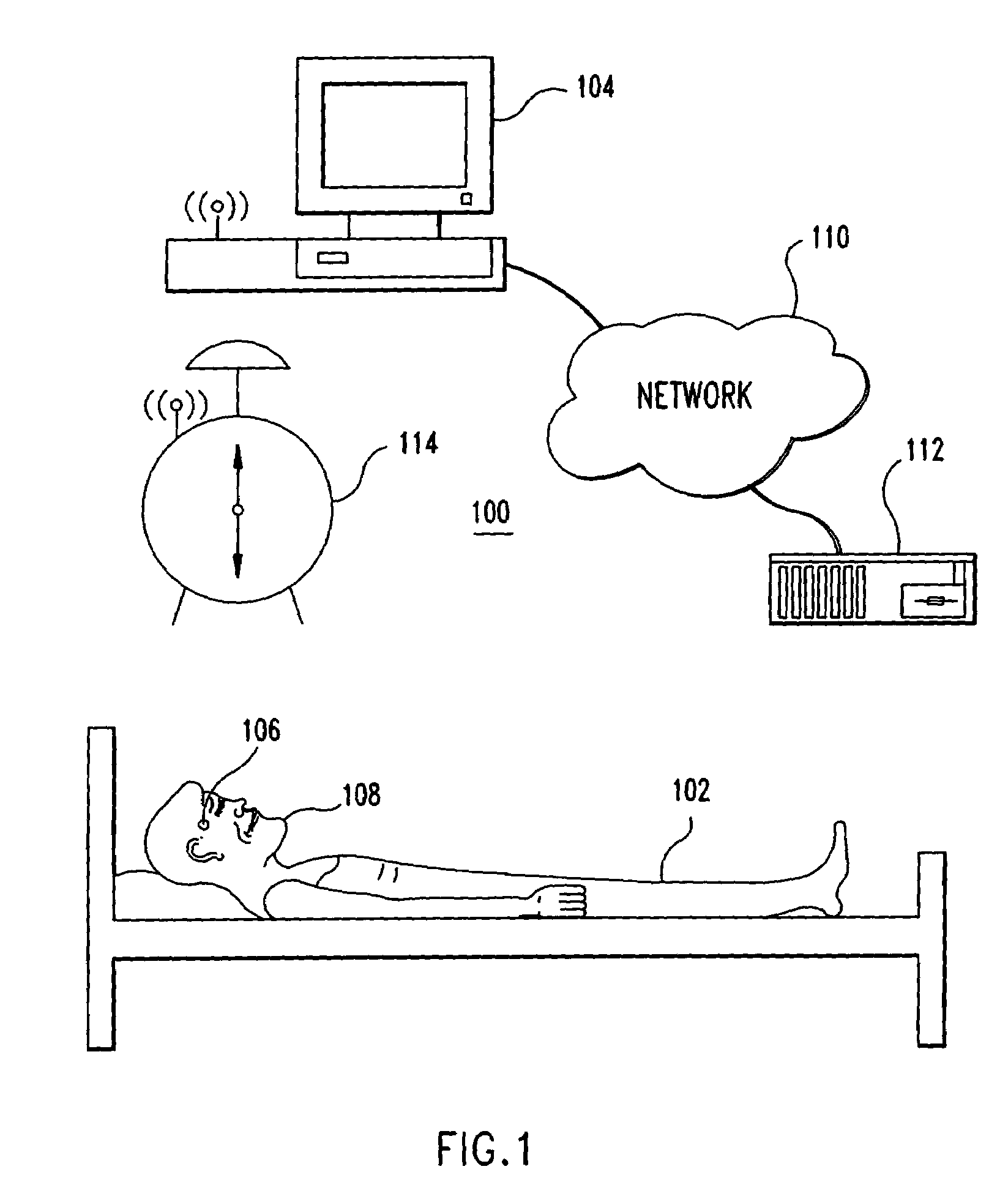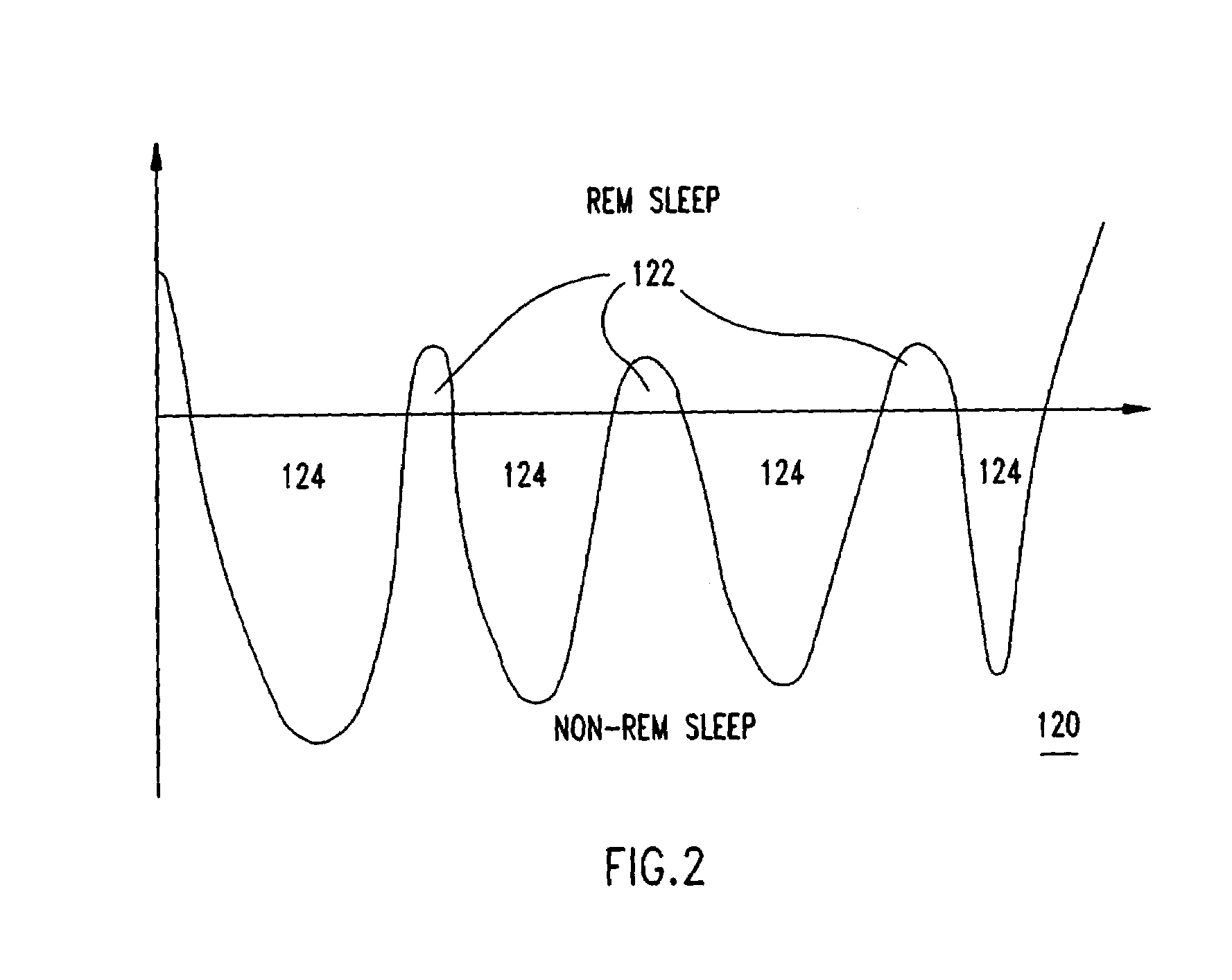Alarm clock system, method of operation and program product therefor
a technology of alarm clock and program product, which is applied in the field of alarm clock, can solve the problem that the system cannot accommodate another very important sleep, and achieve the effect of less subsequent drowsiness
- Summary
- Abstract
- Description
- Claims
- Application Information
AI Technical Summary
Benefits of technology
Problems solved by technology
Method used
Image
Examples
Embodiment Construction
[0024]Referring now to the drawings, and more particularly, FIG. 1 is a block diagram of the preferred embodiment sleep analysis and alarm system arrangement 100 for waking a person 102 during selected periods of sleep. The arrangement includes a local computer 104, which may be a personal computer (PC) for local control. At least one wireless sensor 106 is attached to the eyelids or elsewhere on the head 108 of the sleeping person (sleeper) 102. The local computer is connected over a network 110 to a Computerized Sleep Analyzing Web Server (C-SAWS) 112. The network 110 may be a wireless network or, a more traditional wired network. The local computer 104 is in communication with a Local Alarm Device (LAD) 114 or clock. Optionally, the local computer 104 may be an embedded device, embedded in and part of the LAD 114. Further, the LAD 114 may include the C-SAWS 112 in addition to or independent of inclusion of the local computer 104.
[0025]Before retiring, the user 102 manually inputs...
PUM
 Login to View More
Login to View More Abstract
Description
Claims
Application Information
 Login to View More
Login to View More - R&D
- Intellectual Property
- Life Sciences
- Materials
- Tech Scout
- Unparalleled Data Quality
- Higher Quality Content
- 60% Fewer Hallucinations
Browse by: Latest US Patents, China's latest patents, Technical Efficacy Thesaurus, Application Domain, Technology Topic, Popular Technical Reports.
© 2025 PatSnap. All rights reserved.Legal|Privacy policy|Modern Slavery Act Transparency Statement|Sitemap|About US| Contact US: help@patsnap.com



